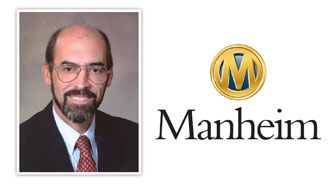Manheim Index Drops by Largest Amount Since July

The Manheim Used Vehicle Value Index made its first downward movement in five months while posting the greatest month-over-month decline since last July.
Manheim determined that wholesale used-vehicle prices (on a mix-, mileage- and seasonally adjusted basis) dropped 1 percent in February after rising in each of the previous five months. The company said that before the seasonal adjustment, wholesale prices rose 2 percent during the month.
As a result, the index reading was at 123.6 for February, which still represented an increase of 4.7 percent from a year ago. However, the reading was down from January’s measure, the index’s all-time high of 124.9.
The index hasn’t moved this much downward since July’s mark came in at 118.9 after June’s reading was 120.2.
“Rising energy prices and new-vehicle incentives generated considerable news during the month, but neither issue had a material impact on wholesale pricing,” Manheim’s Tom Webb surmised.
“Meanwhile, significant, and simultaneous, increases in both new- and used-vehicle retail sales suggest a reinvigorated consumer sector,” Webb continued. “Couple that with an apparent strengthening in the labor market, and you have the ingredients for a self-sustaining recovery.”
Varying Degrees of Incentives
Webb agreed that reports of higher new-vehicle incentive spending in February — most notably at General Motors, Toyota and Nissan — captured headlines. However, the economist thinks the increase for the overall industry was minuscule or non-existent, depending on whose time series a dealer considers.
“More importantly,” Webb began, “it was not the incentive spending of old that was used to simply get rid of excess production. In fact, dealer inventories are currently tight.
“Recent incentives have been strategically used to capture market share in particular market segments or from certain buyer groups. And, the spending was more likely to come in the form of reduced-rate APRs or lease support, as opposed to cash-on-the-hood,” he continued.
“As such, there was no evidence that recent incentive activity has impacted used-vehicle residuals,” Webb pointed out. “As we have noted in the past, new vehicle inventory levels provide a better statistical explanation of used-vehicle pricing than does incentive spending.”
Small & Midsize Segments Show Pricing Strength
Manheim contends there is little doubt that rising fuel prices have captured consumers’ attention. Consequently, dealers are recognizing this trend and have bid up the prices for small and midsize cars.
But, Webb emphasized that these segments have been strong for some time. He calculated these segments actually have been strongest on a three-, six-, and 12-month basis as a result of:
—Better product offerings in the wholesale market.
—Long-term shifts in consumer preferences.
—New-model introductions that truly differentiate themselves from their late-model counterparts in the wholesale market.
The gains for both compact and midsize cars beat February’s overall wholesale price climb. Manheim pinpointed the compact car rise at 7.6 percent and the midsize car climb at 6.9 percent.
Below the February industry increase of 4.7 percent but still gaining were vans (up 3.6 percent) and pickups (up 2.6 percent). CUVs and SUVs barely eked out a positive gain as Manheim put the segment price rise at just 0.6 percent.
“Full-size SUVs showed further weakness in February but as noted last month, the overall decline has been substantially less than that indicated by reports that do not adjust for the higher mileage these units now have,” Webb explained.
“Given the supply/demand dynamics currently existing in the wholesale market, we think the concern over higher gas prices should be focused on its macroeconomic impacts, rather than on the possible disruption in wholesale used vehicle pricing,” he went on to say.
Manheim also noticed that luxury car prices softened again in February, dropping 1.5 percent from a year ago.
Retail Markets Continue on Upward Track
Manheim wrapped up its latest index report by touching how new and used retail sales fared last month.
Webb reiterated that the seasonally adjusted annual rate of new-vehicle sales came in better than expected at 13.4 million, which pushed the average pace for the first two months above 13 million.
The economist stressed that used-vehicle sales were also strong in February as CNW Research put the gain at 12 percent, which resulted in a year-to-date rise of 9 percent.
“The increases have occurred in all channels (franchised, independent and private party) and for all price points,” Webb determined. “In the higher-end segment, CPO sales were up a large 13 percent in January, and indications are that February was also strong.”

 View The Latest Edition
View The Latest Edition

